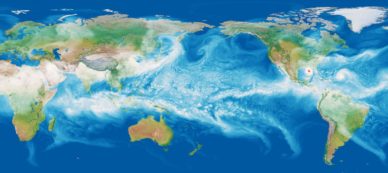From the Program Manager: E3SM Project Moves Forward

By Dorothy Koch, Program Manager
The past few months have been very busy for the E3SM project! Following the version 1 model release and the shift to open-development, the project defended its U.S. Department of Energy proposal to transition to “phase 2”. Project leaders met face-to-face with a large international review panel in May. The proposal included details on science, computational, and development plans for the coming years. Model simulation progress is steady:
- In the low-resolution configuration (100 km atmosphere, 60-30 km equator-pole ocean), the CMIP DECK experiments are complete and include:
- Pre-industrial control run (500 years);
- 1PCT CO2 (150 years);
- Abrupt-4x CO2 (150 years);
- Historical (1850-2014, five ensemble members); and
- AMIP (1870-2014).
- The low-resolution biogeochemistry coupled model configuration spin-up for land and ocean systems is underway, and the first set of coupled simulations has begun.
- For the high-resolution model (25 km atmosphere, 18-6 km equator-pole ocean), five years of 1950 control simulation have been completed, based on the released model configuration. However, this may be repeated after some bias corrections are implemented.
The E3SM user community will be expanding in coming months, with many new projects contributing to model analysis as well as development. This issue describes several projects supported by Scientific Discovery through Advanced Computing (SciDAC). Future issues will describe other key collaborations for E3SM.
As the user group expands, E3SM will be providing training to new users, beginning with an online pre-recorded format, to be posted in September.
From November 5 to 8, 2018, the E3SM project members will join with other DOE modeling activities for a large investigator meeting in North Potomac, Maryland. The meeting will be formatted around cross-cutting science topics, and will also include a day for the E3SM project to meet as a team and with interested users and investigators from other DOE projects. E3SM will also be heavily involved in several AGU and AMS sessions and Town Halls this fall.


